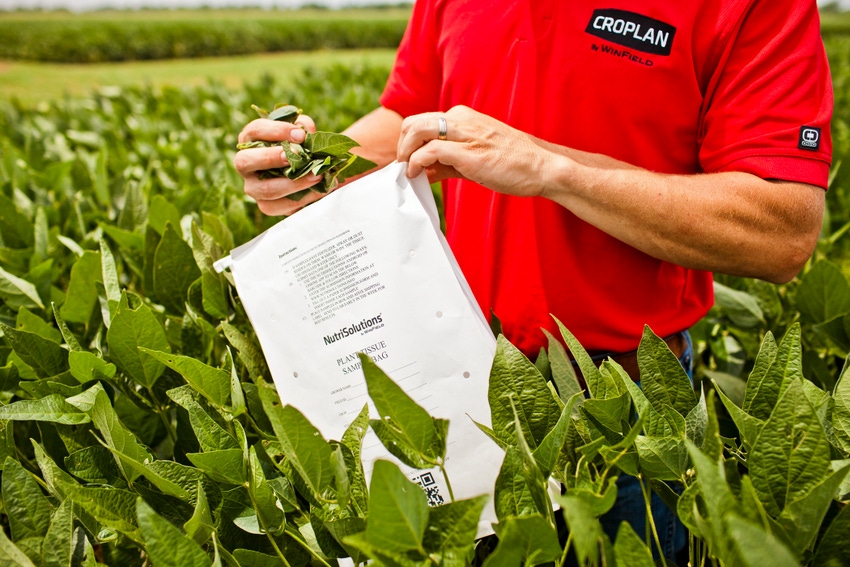December 13, 2016

Spring 2016 brought both normal rainfall and soil temperatures to Minnesota. However, our state saw about 10 to 12 inches more rainfall than normal throughout the growing season. The fact that much of it came in July and August enabled larger amounts of soil mineralization and increased uptake of nutrients, such as nitrogen, that are otherwise inaccessible during this traditionally drier period.
Yet, we still had nutrient deficiencies in 2016.
Let’s look at what corn, soybean and alfalfa tissue samples told us about those deficiencies.
Corn
The No. 1 deficiency in 21,250 corn tissue samples from 3,000 farms across Minnesota, Wisconsin and Iowa in 2016 was of the micronutrient zinc. Eighty-three percent of tissue samples were zinc deficient, followed by the micronutrients boron (69% of samples deficient) and manganese (68% deficient).
About 60% of tissue samples showed a deficiency in the macronutrient nitrogen. This was slightly lower than in 2015 and very low compared to 2013, when corn was close to 85% nitrogen-deficient because of early rainfall.
The macronutrient sulfur was deficient across Minnesota cornfields late in the growing season. Though most operations apply sulfur in the spring, by the time substantial rainfall came in late summer, those reserves had either been used by corn plants or leached away out of reach of the roots.
Just like nitrogen, sulfur is mobile in the soil. Therefore, it is important to use tissue sampling to identify which nutrients may be deficient in your crops. Know that nutrient deficiencies change from year to year, and certain hybrids respond to nutrient applications better than others. Working with your agronomist to procure quality test-plot data, including response to population, response to nitrogen and response to fungicide scores, can help you create a balanced fertility program for your crop that can be managed all season.
Soybeans
The macronutrient potassium was the leading nutrient deficiency in 1,686 Minnesota soybean tissue samples in 2016 from 245 farms, with just under 65% of samples coming back deficient. While sulfur deficiencies were widespread in corn, only 23% of soybean samples were sulfur-deficient.
Alfalfa
Of the 466 alfalfa tissue samples taken in Minnesota and Wisconsin in 2016, nearly 98% were deficient in calcium. That was atypical for alfalfa and due in large part to the heavy summer rains.
What does this mean for 2017?
Corn yields across many areas of Minnesota were as good in 2016 as they have ever been. Rainfall and weather account for much of that, plus farmers did a good job managing nutrients, such as nitrogen and potassium. However, in high-yielding corn years, micronutrients often show the most deficiencies.
Because zinc, boron and manganese were deficient this year, we see that it is the smaller things that are having the biggest effects. What would have happened if farmers had managed those micronutrients to optimize crop performance? At our current 2016 yield level, it would not have taken much to gain a significant amount of yield potential.
One of the most important takeaways from 2016 tissue sampling is that we had very good yields, yet we were potentially limited on the top end by our micronutrients being as deficient as they were. Often, micronutrients do rise to the top of nutrient deficiencies. However, in most years, that is overridden by macronutrient deficiencies such as nitrogen, potassium, phosphorus and sulfur. In 2016, that wasn’t the case.
When you are in a high-yield environment, micronutrients are key to unlocking the next level of yield potential. Work with your agronomist this winter to develop a comprehensive nutrient strategy to help guide your 2017 planning.
Zuk is a regional agronomist with WinField United in southern Minnesota. Contact him at 507-259-5168 or [email protected].
About the Author(s)
You May Also Like




